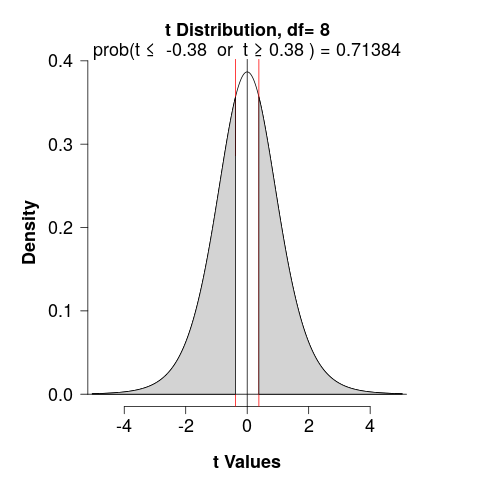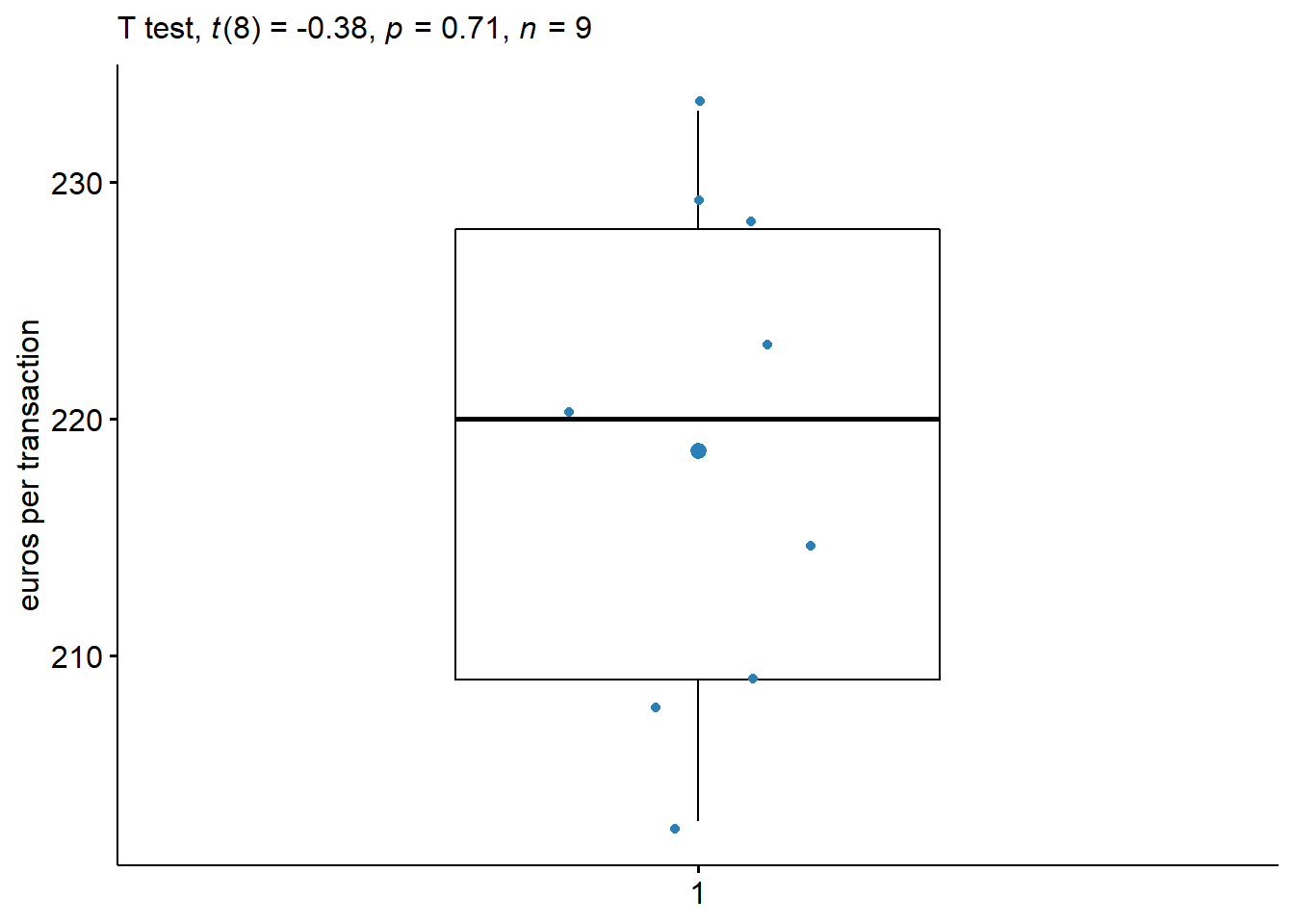13.1 One-Sample: Hypothesis Testing on the Mean
We will consider testing:
\[H_0: \mu = \mu_0 \] \[H_1: \mu \not= \mu_0 \]
Let \(x_1,x_2,\ldots,x_n\) be a random sample for a normal distribution with unknown mean \(\mu\) and unknown variance \(\sigma^2\).
If the null hypothesis \(H_0: \mu=\mu_0\) is true, the random variable
\[T=\dfrac{\bar{x}-\mu_0}{\hat{s}/\sqrt{n}}\]
has a \(t\) distribution \(n-1\) degrees of freedom.
13.1.1 Example
A company wants to improve sales. Previous sales data indicate that the mean sale was 220 euros per transaction. After training the sales force, recent sales data were taken from a sample of 9 salesmen. The company needs to know if the training had worked.
- Data
\[ x= \{ 203, 229, 215, 220, 223, 233, 208, 228, 209 \} \]
\[n=9; \,\,\,\, \bar{x}=218.67 ; \,\,\,\, s = 10.52.\]
- Hypothesis
\[H_0: \mu = 220\] \[H_1: \mu \neq 220\]
- Test statistic
\[T=\dfrac{\bar{x}-\mu}{S/\sqrt{n}} = \dfrac{218.67-220}{10.52/\sqrt{9}}= -0.38 \]
- Decision
- Critical Value
We would reject \(H_0\) if \(T\) were less than \(t_\alpha\) or greater than \(t_\alpha\) (determined used a \(t\)-table)
\[\alpha = 0.05; \,\, df = 8\]

- p-value
We would determine the area under a \(t_{df}\) curve, to the right of \(T\) and to the left of \(-T\)
\[T = \pm 0.38; \,\, df = 8\]

- Interpretation
There is insufficient evidence, at the \(\alpha= 0.05\) level, to conclude that the mean sale is not different from 220 euros (per transaction).
- Reporting
A one-sample t-test was computed to determine whether the mean sales was different to the population normal mean sales (220).

- The company thinks that there is a difference (that the mean sales increased after the training). Test this hypothesis.